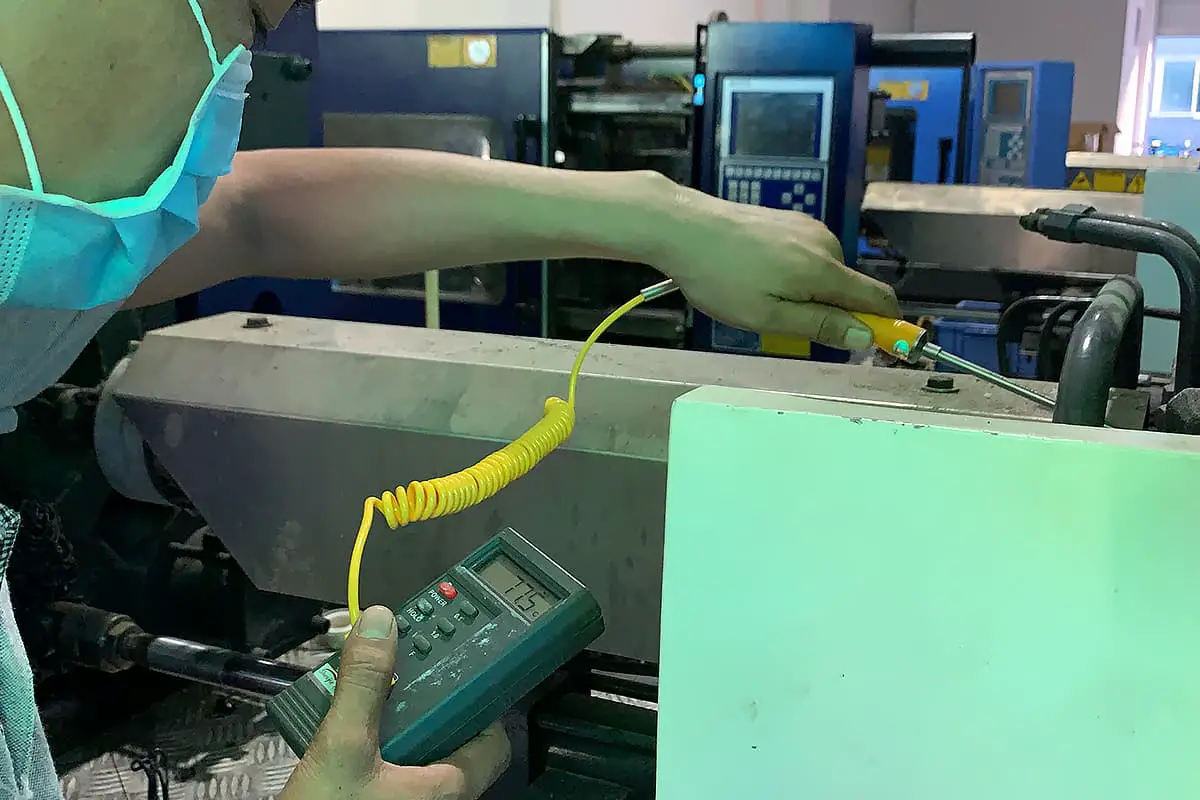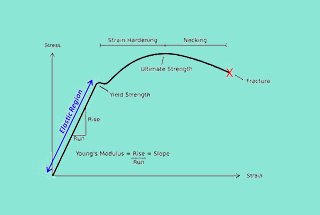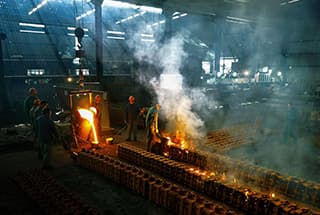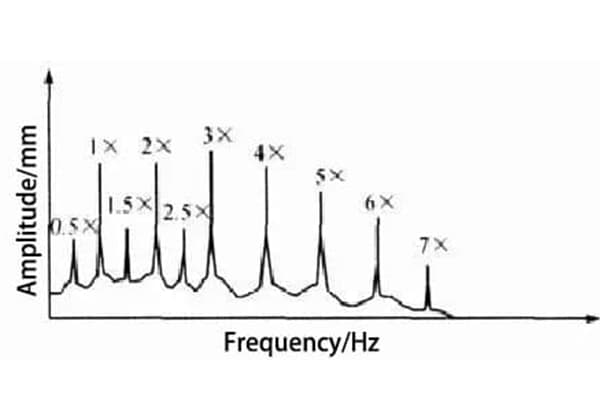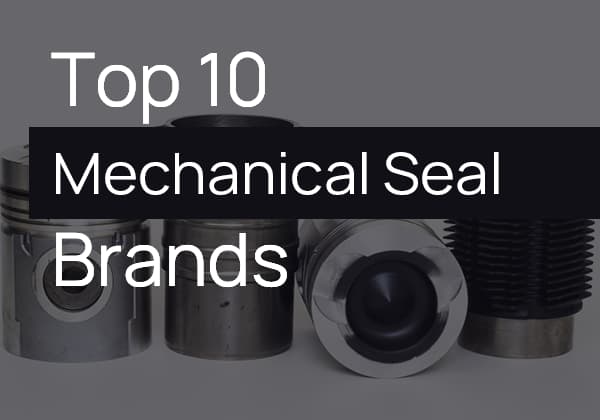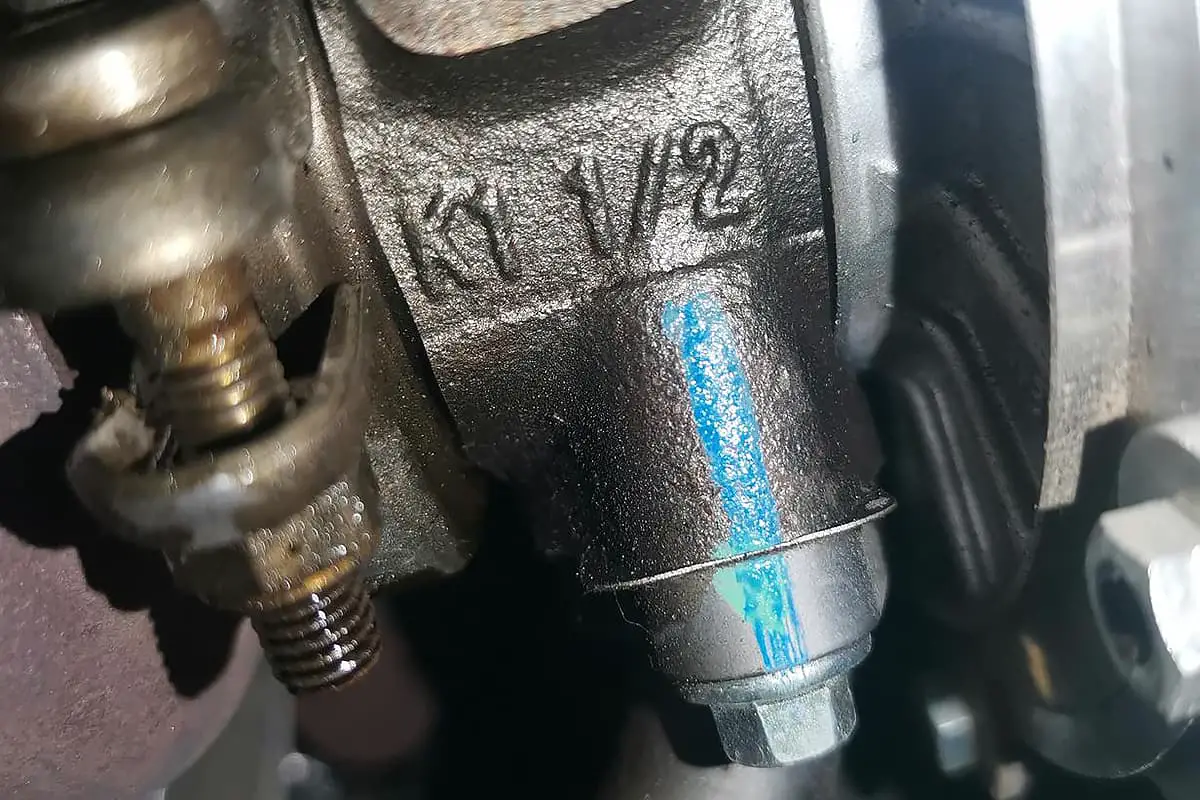
Ever wondered how proper lubrication can make or break industrial equipment? This article delves into the critical role of mechanical equipment lubrication, detailing its significance in preventing wear, reducing maintenance costs, and extending equipment life. You’ll learn how selecting the right lubricants and implementing effective lubrication management can significantly boost operational efficiency and reliability. Dive in to discover essential tips and best practices for keeping your machinery running smoothly and efficiently.

In the process of industrial production, equipment is both a vital vehicle for production and the material foundation for the survival of the company. The quality of equipment operation directly affects the company’s production, operations, and profits.
Therefore, equipment lubrication and maintenance are crucially important. Lubrication and maintenance are both the foundation of equipment usage and management and are essential methods to keep equipment running smoothly and in good condition.
They are also an objective requirement for equipment operation. The ability of equipment to maintain long-term operation largely depends on the level of lubrication and maintenance.

Proper lubrication and maintenance can promptly detect and handle various issues that may arise, create a conducive environment for equipment operation and prevent problems before they occur.
Therefore, rational, scientific, and effective lubrication maintenance management can ensure the normal operation of the equipment, reduce equipment wear and tear, lower maintenance costs, and prolong the equipment’s lifespan.
Equipment lubrication management is an essential method for ensuring the normal operation of the equipment, reducing wear on equipment parts, increasing production efficiency, improving equipment use efficiency, reducing equipment failure rates and lowering equipment maintenance costs.
During the operation and management process of the equipment, the principle of “three parts treatment, seven parts maintenance” is relied upon. Therefore, equipment lubrication maintenance is a crucial part of the full cycle management of the equipment.
It is necessary to do a good job in equipment lubrication management, promptly inspect and deal with various problems of the equipment itself, eliminate unnecessary wear and tear on the equipment, improve the operating conditions of the equipment, and prevent problems before they occur.
Lubrication maintenance should be established on the basis of scientific management. It has extremely important significance for ensuring normal production in enterprises, maintaining the good condition of the equipment, demonstrating its efficiency, reducing equipment failures, and increasing economic benefits.
The roles of equipment lubrication maintenance include reducing friction, reducing wear, cooling and temperature reduction, cleaning, and sealing.
(1) Reducing Friction
Reducing friction resistance to save energy, reduce wear, extend the operation cycle of the equipment, and improve economic efficiency.
(2) Reducing Wear
The oil film formed between relatively moving friction pairs can reduce friction, reduce surface wear and scratches, and maintain the fitting accuracy of parts.
(3) Cooling and Temperature Reduction
The circulating lubrication system using liquid lubricants can take away the heat generated by friction.
(4) Preventing Corrosion
The oil film formed between relatively moving friction pairs, when covered on the friction surface, can isolate air and corrosive gases and prevent the friction surface from being corroded or rusted.
(5) Transmitting Force
Some lubricants can act as force transmission mediums, such as hydraulic oil.
(6) Shock Absorption
Disperse load, alleviate impact, and play a role in shock absorption and buffering.
(7) Insulating
Mineral oils and other lubricants have high electrical resistance, and thus can serve as electrical insulating oils and transformer oils.
(8) Cleaning
With the circulation of lubricating oil, pollutants and debris on the friction surface can be carried away and then filtered through a filter.
(9) Sealing
Lubricants form a seal on certain exposed parts, preventing condensation water, dust, and other impurities from entering and maintaining a sealed state between the cylinder and piston.
Lubricants are used to reduce friction resistance between equipment parts and slow their wear. In mechanical equipment failures, 60% of the equipment failures are caused by improper lubrication.
Therefore, the selection of lubricants is also crucially important and is the primary link in lubrication management.
There are many types of lubricants, and the classification varies according to different criteria. They are usually divided into four categories according to the state of the substance:
(1) Liquid Lubricants
In industrial and mining enterprises, the usage and variety of liquid lubricants are the largest, such as hydraulic oil, mechanical oil, etc.
(2) Semi-solid Lubricants (Lubricating Grease)
For example, lithium grease in soap-based grease has a wide range of uses and large usage, and it has excellent performance in many aspects.
(3) Solid Lubricants
The most commonly used solid lubricants are molybdenum disulfide, graphite, and polytetrafluoroethylene.
(4) Gaseous Lubricants
Under certain conditions, gas can also become a lubricant like a liquid.
Table 1: Selection of Main Performance Indicators of Lubricants
| No. | Performance Indicators | Significance | Selection Method |
| 1 | Viscosity | Viscosity is the internal resistance of a liquid when it flows, also known as the internal friction of the oil. It is an indicator of the oiliness and fluidity of the oil. The greater the viscosity, the stronger the oil film, but the worse the fluidity. Viscosity is the most important performance indicator of lubricating oil and is the main basis for the selection of lubricating oil. | Determined by consulting relevant charts based on design or calculation data. |
| 2 | Pour Point and Cloud Point | The pour point indirectly represents the low-temperature fluidity index of lubricating oil during storage and use: the cloud point is the approximate highest temperature at which the oil loses its fluidity. | It has been verified that the use temperature is 5-10°C higher than the pour point. |
| 3 | Flash Point | The safety performance index of lubricating oil during storage and use. | Leave a 1/2 safety factor according to safety regulations, which is 1/2 higher than the actual use temperature. |
Table 2: Simple Inspection Methods for Lubricants
| Project | Inspection Method | Identification Content |
| Appearance | Pour the oil sample into a transparent glass container and observe the color for any fog, turbidity or dust | Air bubbles, moisture, dust, oil degradation |
| Smell | Compare with new oil, foul or burnt smell | Oil degradation |
| Acidity Value | PH Test Strips | Oil degradation |
| Spot Method | Drop a drop of oil on filter paper and leave it for 1 hour, observe the wetting situation | If the center of the oil-soaked spot appears a transparent thick dot, it signifies the wear powder of dust, indicating the oil has degraded |
| Hot Burst Test | Drop oil on a hot steel plate, check whether there is a bursting sound | Moisture |
| Rapid Viscosity Detection | Use a simple viscometer | Viscosity |
Generally speaking, the primary indicator for lubricating oil is viscosity, while the main gauge for grease is its penetration rate.
(1) Principles for Selecting Lubricating Oil
1) Workload
The workload of motion pairs is directly related to the fluidity and anti-wear properties of the lubricating oil used.
Typically, when the workload is large, the viscosity of the lubricating oil used is higher, and its oiliness and extreme pressure resistance should be excellent. When the workload is small, the viscosity of the oil used should be lower, with less demand for oiliness and extreme pressure resistance.
2) Speed
Usually, when the speed of the motion pair is high, a low-viscosity lubricating oil must be used to reduce friction resistance, thus decreasing the power consumed and heat generated. For low speeds, a higher viscosity oil can be used.
3) Operating Temperature
The operating temperature affects the viscosity changes and oxidation speed of the lubricating oil used. As the operating temperature rises, the viscosity of the lubricating oil decreases; conversely, the viscosity increases.
Moreover, under high temperatures, the oxidation speed of the lubricating oil accelerates, causing it to deteriorate and shortening its lifespan. Therefore, for lubrication points under high temperatures, lubricating oil with high viscosity, a high viscosity index, a high flash point, and excellent oxidation resistance should be used.
The flash point of general lubricating oil should be 20-30℃ higher than the highest operating temperature. The high usage temperature for mineral lubricants is 120-150℃, for ester synthetic oils it is 200-250℃, and for silicone oil it is 200-250℃.
4) Working Environment
For lubrication points operating under damp conditions such as salt fog, water vapor, coolant, or emulsion, general oil and grease are prone to deterioration, emulsification, or being washed away and lost.
In such cases, oil materials with strong anti-emulsification, rust resistance, corrosion resistance, and strong adhesion should be chosen. Meanwhile, corresponding sealing measures should be adopted to prevent the intrusion of water and moisture, salt fog, etc.
In a medium environment with chemical media, corrosive media (strong acid, strong alkali, salts, etc.), the corrosion of oil and grease increases. Therefore, lubricants with good chemical stability should be chosen.
(2) Principles for Selecting Grease
1) Workload
Choosing grease based on the load is key to ensuring lubrication. For heavy-load lubrication points, choose grease with high viscosity, high thickener content, high compressibility, and high wear resistance.
For high loads, choose grease with a small penetration (higher consistency). If subjected to both heavy loads and impact loads, choose grease containing pressure additives, such as grease containing molybdenum disulfide.
2) Speed
The higher the operation speed of the lubricated parts, the greater the shear stress on the grease, the greater the damage to the fibrous skeleton formed by the thickener, and the shorter the lifespan of the grease.
When the temperature and load conditions are the same, speed is the main factor affecting the application of grease. Usually, high-speed parts heat up quickly and reach high temperatures, which can thin the grease and cause it to be lost. In these cases, choose grease with a higher consistency.
3) Operating Temperature
Temperature significantly impacts the lubrication function and lifespan of grease. After the operating temperature of the lubrication point exceeds the upper limit of the grease temperature, for every 10-15℃ increase in temperature, the lifespan of the grease is reduced by approximately half.
This is due to the accelerated evaporation loss, oxidation, and colloid shrinkage of the base oil in the grease. The lifespan of the grease decreases.
The operating temperature of the lubrication point also changes with the surrounding medium temperature. For high environmental temperatures and high mechanical equipment operating temperatures, use high-temperature-resistant grease. The highest usage temperature of general grease should be 20-30℃ lower than the dropping point.
4) Working Environment
Environmental conditions refer to the working environment and surrounding medium of the lubrication point, such as air humidity, dust, and whether there are corrosive media. In humid environments and situations where there is contact with water, choose water-resistant grease, such as calcium-based, lithium-based, or complex calcium-based grease.
Under harsh conditions, choose grease with rust inhibitors, and avoid choosing sodium-based grease with poor water resistance. For lubrication points in environments with strong chemical media, choose synthetic grease resistant to chemical media, such as fluorocarbon grease, etc.
Other Considerations
In addition to the above points, when selecting lubricants, also consider their cost-effectiveness during use, and analyze whether using this type of lubricant will extend the lubrication cycle, increase the number of injections, grease consumption, bearing failure rate, and maintenance costs, etc.
In addition to the above points, when selecting lubricants, also consider their cost-effectiveness during use, and analyze whether using this type of lubricant will extend the lubrication cycle, increase the number of injections, grease consumption, bearing failure rate, and maintenance costs, etc.
Paying serious attention to the management of mechanical equipment lubrication and maintenance is key. Utilizing human initiative can improve the effectiveness of equipment maintenance.
The core of equipment operation management is to transition from reactive to proactive, and from experience-based to standardized approaches.
“Standardization” is the focus of equipment operation management, and the standards for lubrication and maintenance are the key to equipment operation. Therefore, strengthening lubrication and maintenance management is crucial to extending the life of equipment.
1) Establish a Comprehensive Equipment Lubrication Management System
Many companies lack a comprehensive system for managing equipment lubrication. They do not strictly follow the “Five Determinants” of mechanical equipment lubrication (location, timing, quality, quantity, and personnel) and three-stage filtration management.
Companies should establish corresponding organizational structures, improve lubrication management regulations, perfect lubrication management details, and strictly implement them.
2) Develop a Lubrication Maintenance Plan Based on Actual Equipment Operation
During equipment operation, maintenance personnel often only add oil when the equipment is low, without a proper oil change plan. They lack basic oil monitoring and contamination control methods, relying solely on experience to judge oil quality.
Long-term operation can lead to oil contamination and degradation, accelerating equipment wear. It is crucial to develop appropriate lubrication maintenance plans and lubrication chart cards, detailing the oil change process to guide maintenance personnel in improving lubrication issues.
3) Enhance Lubrication Knowledge Training and Select Lubricants Reasonably
Companies should strengthen technical training on lubrication maintenance management, with dedicated personnel for management. From the selection of lubricants to their application and recycling, it is essential to be scientific and reasonable.
Simultaneously, there should be efforts to learn and promote new products and technologies, effectively extending the equipment’s lifespan.
4) Implement Oil Analysis on Key Equipment
Periodic oil analysis should be performed on key equipment and those requiring oil changes based on quality to understand the equipment’s lubrication wear state and achieve predictive maintenance.
5) Control Oil Filling Quantity Reasonably
In conclusion, the management of mechanical equipment lubrication and maintenance is a critical aspect of a company’s survival and development. The quality of the equipment directly impacts the company’s economic benefits.
In managing the entire lifecycle of equipment, it’s not just about managing the technical condition of the equipment and diagnosing failures, but also about managing the economic benefits of equipment operation and energy resources.
Therefore, to extend the lifespan of the equipment, management should prioritize lubrication and maintenance management during the operation process, scientifically and reasonably manage lubrication based on the actual operation conditions of the equipment, ensure reliable and stable operation of the equipment, thereby reducing company costs and enhancing competitiveness.

